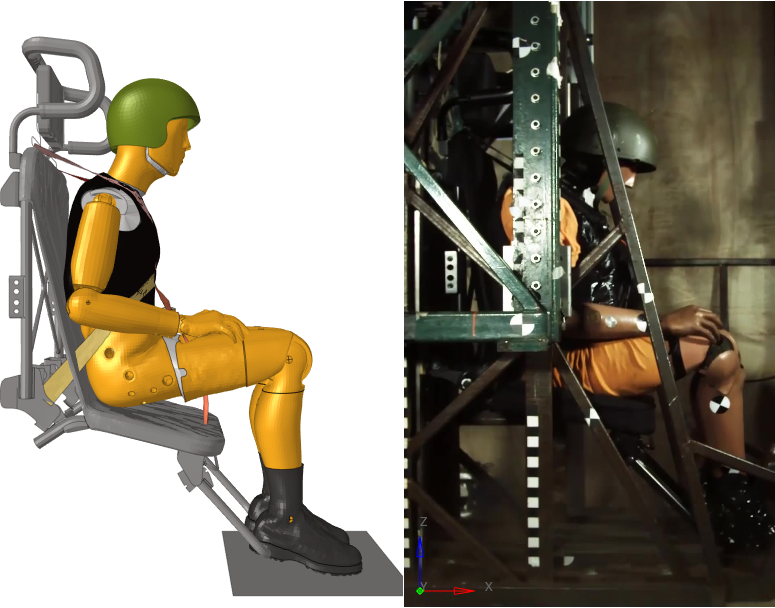The video below shows the FEA simulation of a military seat drop test side by side with the actual video of the testing conducted at the Millbrook military test facility in the UK.
The simulation was performed to study and understand the seat design so that future improvements and optimisations can be made to the seats blast performance.
The simulation and test both use the Humanetics Hybrid III MIL-LX crash dummies (ATD’s). The simulation uses the FEA version of the dummy created, validated and licensed by Humanetics. This allows the calculation of human injury levels in accordance with the requirements of AEP-55 to assess the occupant survivability during a under vehicle blast.
This video below shows a section view through the Hybrid III ATD. The detail of the interior of the Hybrid III can now be seen, showing the incredibly complex nature of the FEA version of the dummies. The FEA version is a fully detailed representation of the actual physical Hybrid III ATD.
It has all the instrumentation of the actual dummy and has been extensively and exhaustively correlated and calibrated to be identical in performance to the actual dummy. This allows us to be confident that our injury assessments using FEA simulations are comparable to physical test.
This means that you can develop designs in the CAE (computer aided engineering) space using CAD and FEA, before you need to commit to building prototypes and undertaking expensive and time costly build and test programmes.
Undertaking preliminary FEA simulations also allows a more detailed understanding of the processes at work, as you can cut sections through the model, as we have here, to understand what is happening. You can plot stresses, plastic strains, forces, accelerations, energies and deformation in real time on the structures to explore the sequence of events so you can make educated decisions on design improvements.

